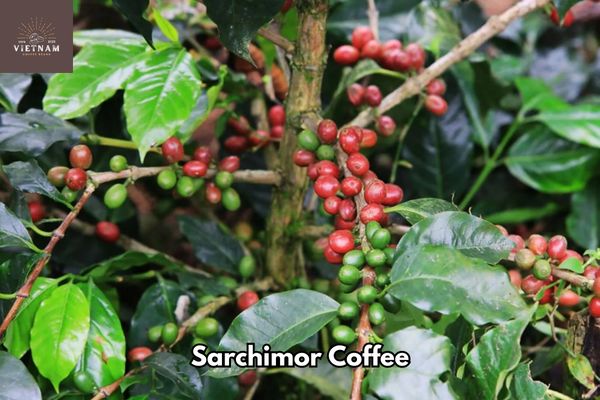I’ve always been fascinated by the art and science behind coffee processing. There’s something truly magical about taking a humble coffee cherry and transforming it into a rich and flavorful cup of coffee.
One processing method that has captured my attention is natural processed coffee. It’s the oldest method in the book, and it’s still widely practiced in many coffee-growing regions around the world.
Natural coffee processing involves allowing the coffee seeds to remain in contact with the fruit for an extended period, resulting in a distinct flavor profile that is fruity and vibrant. Think of flavors like coffee cherry, blueberry, raspberry, or even strawberry dancing on your taste buds. It’s a flavor experience like no other.
In this article, we’ll explore the steps involved in natural coffee processing, from picking ripe coffee cherries to the meticulous sorting and drying process. We’ll also delve into the crucial role that workers play in ensuring the perfect drying conditions and the post-drying processing steps that bring the coffee to its final form.
Join me on this journey as we unravel the secrets and nuances of natural coffee processing. It’s a world of flavor waiting to be discovered.
Key Takeaways
- Natural coffee processing is the oldest method to remove coffee seed from the coffee cherry and is commonly practiced in many coffee-growing countries.
- Natural coffees have a fruitier profile with flavors that can include coffee cherry, blueberry, raspberry, or strawberry.
- Dry, warm, and sunny climates are ideal for natural processing, which involves longer fruit contact with the seed and results in a distinct flavor.
- Meticulous sorting, attention to detail, and constant monitoring are required throughout the drying and post-drying processing stages to ensure the best quality and prevent defects and mold.
Steps of Processing

When processing natural coffee, there are several steps involved. First, I pick the ripe coffee cherry and deliver it to a washing station. At the washing station, the duration of fruit contact determines whether it will be a washed or natural coffee. The difference between the two lies in the drying duration and the meticulous quality control during processing.
Only the ripest, freshest, and most developed fruit is accepted at the washing station. This ensures that the best quality cherries are processed. The organic material in the fruit begins fermenting as soon as the cherries are picked. Under the hot sun, this fermentation is accelerated. Therefore, constant attention is required to rotate and sort the cherries.
The drying process for natural coffee takes longer compared to other methods. It requires regulating and modulating the drying process to achieve the desired flavor profile and prevent defects or mold. This attention to detail is crucial in producing the distinct and fruity flavors of natural coffees.
Drying Techniques
During the drying process, I carefully transfer the cherry to another surface to control the rate of drying. This step is crucial in natural coffee processing as it allows me to regulate the fermentation and drying process.
Natural coffees require longer drying time compared to other processing methods, usually taking three to four weeks to complete. However, the advantages of natural processing are well worth the extra effort.
The longer fruit contact with the seed results in a distinct flavor profile that coffee enthusiasts around the world appreciate. The challenges in drying techniques lie in the constant attention required to rotate and sort cherries, as well as the need for regulation and modulation of the drying process.
But with meticulous care and attention to detail, we ensure that only the best quality cherries are processed, resulting in exceptional natural coffees.
| Advantages of Natural Processing | Challenges in Drying Techniques |
|---|---|
| Fruitier flavor profile | Longer drying time |
| Distinct flavors such as coffee cherry, blueberry, raspberry, or strawberry | Constant attention required |
| Increasing interest in the profile resulting from longer fruit contact | Regulation and modulation of drying process |
| Being adopted by producers worldwide | Meticulous sorting during drying process |
Importance of Sorting

Sorting plays a crucial role in ensuring that only the highest quality cherries are selected for processing. The efficiency of the sorting process directly impacts the overall quality of the coffee. By meticulously sorting the cherries during the delivery and drying process, we can prevent the presence of mold and defects that can negatively affect the flavor and aroma of the final product.
The impact of sorting on coffee quality is profound. It allows us to eliminate any underdeveloped or overripe cherries, ensuring that only the ripest, freshest, and most developed fruit is accepted. This attention to detail and commitment to quality control results in a superior cup of coffee with vibrant flavors and aromatic complexity.
The importance of sorting cannot be overstated. It is through this careful process that we are able to consistently deliver natural coffees with distinct flavor profiles that coffee enthusiasts worldwide value and appreciate.
With each carefully sorted cherry, we are able to bring the essence of the coffee cherry, whether it be the sweetness of blueberries, the tartness of raspberries, or the juiciness of strawberries, into every cup.
Role of Workers
As a worker in the coffee industry, I play a crucial role in regulating and modulating the drying process during natural coffee processing. My experience and knowledge allow me to efficiently handle and carefully rotate the cherries during the drying process.
I am constantly monitoring the cherries, ensuring they are drying evenly and preventing any defects or mold from forming. I take pride in my attention to detail, as it is essential in producing high-quality natural coffees.
I understand the importance of efficiency improvement and worker training and development in the coffee industry. I believe in the continuous improvement of my skills through training and development programs.
This enables me to stay updated with the latest techniques and advancements in natural coffee processing, ultimately contributing to the exceptional flavor profiles that coffee enthusiasts worldwide appreciate.
Final Product and Export

After the green coffee is carefully processed and stored, it is ready to be exported to coffee enthusiasts worldwide. Quality control measures play a crucial role in ensuring that only the best coffee is exported. Meticulous sorting and hand selection guarantee that the final product meets the highest standards. This attention to detail prevents any defects or mold from reaching the final export.
To provide a glimpse into the diversity of natural coffees, let’s explore the various regions where they are exported. The table below showcases three different regions known for their distinct natural coffee profiles:
| Region | Flavor Profile | Notable Characteristics |
|---|---|---|
| Ethiopia | Coffee cherry, blueberry | Birthplace of Arabica coffee |
| Brazil | Nutty, chocolatey | Largest coffee producer |
| Costa Rica | Citrus, floral | Sustainable farming practices |
Each region offers a unique taste experience, showcasing the beautiful flavors that result from the natural coffee processing method. By exporting natural coffees to different regions of the world, we are able to share the passion and expertise that goes into every cup.
So, whether you’re a coffee connoisseur or a casual coffee lover, get ready to embark on a flavorful journey with natural coffees from around the globe.
Frequently Asked Questions For Topic: “what is natural processed coffee?”
Conclusion
In conclusion, the natural coffee processing method is a true art form that produces a coffee with a flavor profile like no other.
From the careful selection of ripe coffee cherries to the meticulous sorting and drying process, every step is crucial in creating the unique taste that coffee enthusiasts worldwide crave.
The dedication and expertise of the workers involved cannot be overstated, as they play a vital role in regulating the drying process and ensuring the quality of the final product.
With its distinct fruity flavors, natural coffee is a true treasure that continues to captivate coffee lovers everywhere.






